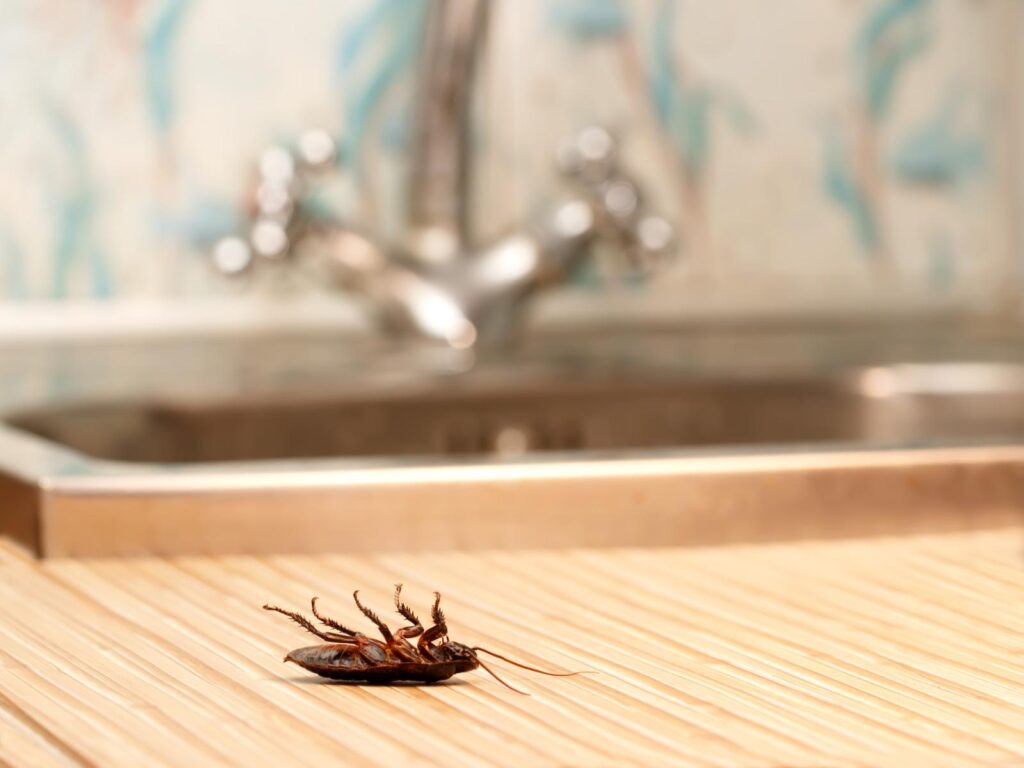
Contents
If you’re facing an indoor ant problem, it’s essential to address it systematically. Start by identifying the specific ant species invading your space. Understanding their behavior can greatly improve your control efforts. Maintaining a clean environment is equally important, as it removes potential attractants. Additionally, sealing entry points can prevent further invasions. But there’s more to contemplate when tackling this issue effectively. Explore the following tips for thorough ant control solutions.
Key Takeaways
- Maintain cleanliness by storing food in sealed containers and regularly cleaning spills to eliminate attractants for ants.
- Seal entry points around windows, doors, and cracks to prevent ants from entering your home.
- Use natural repellents like vinegar and essential oils to disrupt ant trails and deter their movement.
- Set up bait stations in strategic locations to target specific ant species and monitor their activity levels.
- If infestations persist, seek professional help for tailored pest control solutions and ongoing monitoring.
Identify the Ant Species in Your Home
Identifying the ant species in your home is essential for effective control. Different species exhibit unique behaviors and preferences, so knowing which ones you’re dealing with can streamline your pest management approach.
Start by observing common ant characteristics, such as size, color, and nest location. For instance, carpenter ants are typically larger and may create nests in wood, while sugar ants are smaller and often found near food sources.
Utilize species identification tools like field guides or mobile apps designed for pest identification. These resources can help you accurately categorize the ants you encounter.
Pay attention to their movement patterns; for example, if you see ants forming long trails, they’re likely foraging for food. By correctly identifying the ant species, you’ll be better equipped to implement targeted control measures, fostering a sense of community and belonging in your home environment.
Keep Your Home Clean and Clutter-Free
Once you’ve identified the ant species in your home, maintaining a clean and clutter-free environment becomes essential in preventing infestations. Effective ant prevention strategies start with household organization. A tidy space not only deters ants but also fosters a sense of community and belonging.
| Area to Organize | Ant Prevention Strategy | Benefits |
|---|---|---|
| Kitchen | Store food in sealed containers | Reduces food accessibility |
| Living Room | Declutter surfaces | Eliminates hiding spots |
| Pantry | Regularly check for spills | Keeps food sources minimal |
| Entryways | Remove unnecessary items | Limits entry points |
Implementing these strategies will help you create an inviting and ant-resistant home. By staying organized, you’ll not only enhance your living space but also contribute to a healthier environment, making it less attractive to unwanted pests.
Seal Entry Points to Prevent Ant Invasion
Sealing entry points is a crucial step in preventing ant invasions. To effectively manage this, start with entry point identification. Look for cracks in walls, gaps around windows, doors, and any openings where utilities enter your home.
Once you’ve identified these vulnerabilities, choose appropriate sealing materials. Caulk works well for small gaps, while expanding foam can fill larger spaces. Verify that the materials you select are durable and weather-resistant to provide long-lasting protection.
Don’t forget to inspect your home periodically, as new entry points can develop over time. By being proactive, you not only safeguard your living space but also foster a sense of belonging in an ant-free environment.
Use Natural Ant Repellents
When dealing with indoor ant infestations, natural repellents can be effective alternatives to chemical solutions.
You’ll find essential ingredients like vinegar, essential oils, and diatomaceous earth useful in your control strategy.
Understanding the best application methods will help you maximize their effectiveness and keep ants at bay.
Essential Natural Ingredients
While commercial ant repellents can be effective, many natural ingredients offer a safe and eco-friendly alternative for controlling these pests.
Essential oils, such as peppermint, tea tree, and citrus oils, create an inhospitable environment for ants, disrupting their pheromone trails. You can easily mix these oils with water to create a natural repellent spray.
Additionally, vinegar solutions are highly effective; the acetic acid in vinegar masks ant scent trails and deters them from returning. Combine equal parts water and vinegar in a spray bottle for a potent solution.
Application Methods Explained
To effectively use natural ant repellents, you’ll want to apply them strategically in areas where ants are commonly seen or where they might enter your home. Consider using a spray application for immediate results and granular treatment for long-lasting protection. Here’s a quick reference table to help you decide which method suits your needs:
| Method | Application Area | Effectiveness Duration |
|---|---|---|
| Spray Application | Entry points, trails | Short-term (hours) |
| Granular Treatment | Around the perimeter | Long-term (weeks) |
| Essential Oils | Indoor surfaces | Moderate (days) |
| Vinegar Solution | Kitchen surfaces | Short-term (hours) |
| Diatomaceous Earth | Baseboards, cracks | Long-term (months) |
Set Up Bait Stations Effectively
To effectively control ants, you need to choose the right bait that appeals to their preferences.
Place the bait stations in strategic locations where you’ve observed ant activity, ensuring they’re out of reach of pets and children.
Regularly monitor and replace the bait to maintain its effectiveness and keep the ant population in check.
Choose the Right Bait
Choosing the right bait is essential for effective ant control, as different ant species are attracted to various food sources. Start by identifying the types of baits that align with the ant species you’re dealing with.
For example, sweet baits attract sugar ants, while protein-based baits are effective against carpenter ants. Understanding bait effectiveness is key; some baits may work faster but don’t eliminate the colony, while slower-acting baits can be more thorough.
Once you’ve chosen the appropriate bait, read the label for specific instructions to maximize its effectiveness. Remember, a targeted approach not only enhances your success but also fosters a sense of community as you tackle ant issues together with neighbors.
Strategic Placement Tips
While you’ve selected the right bait, setting up bait stations effectively is crucial for maximizing their impact on ant populations. To guarantee ideal bait placement, follow these guidelines:
| Bait Placement Area | Purpose |
|---|---|
| Near Ant Trails | Increases likelihood of ants finding bait |
| High Activity Zones | Targets areas with frequent ant movement |
| Hidden Locations | Prevents disturbance while allowing access |
Position your bait stations along ant trails and in areas where you’ve noticed high activity. This strategic placement enhances the chances of ants consuming the bait, promoting effective control. Remember, bait stations should be hidden from pets and children to guarantee safety while still being accessible to ants. By following these tips, you’ll create a strong foundation for your indoor ant control efforts.
Monitor and Replace Regularly
Regular monitoring and timely replacement of bait stations are vital to guarantee effective ant control.
Utilize monitoring techniques such as checking bait levels and observing ant activity to ascertain your bait stations remain effective. Establish a maintenance schedule, inspecting each station at least once a week.
If you notice decreased activity or the bait is depleted, replace it promptly to maintain effectiveness. It’s also important to rotate bait types periodically to prevent ants from developing resistance.
By staying proactive and attentive, you’ll foster a sense of community in your home, ensuring everyone enjoys a pest-free environment.
Monitor and Maintain Your Ant Control Efforts
Monitoring and maintaining your ant control efforts is essential for long-term success. By regularly observing ant behavior, you can identify any changes in their scouting patterns, which may indicate a resurgence.
Keep an eye on entry points and hotspots where you’ve noticed activity before. If you spot ants, note their pathways and the type of ant; this information can guide your next steps.
Use bait stations and traps to assess the effectiveness of your control methods. If you see fewer ants, your efforts are working. However, if the numbers start to increase again, it’s time to reevaluate your strategy.
Maintaining cleanliness in your home also plays a vital role in your success, as food sources attract ants. Regularly check and clean areas prone to ant activity to keep your environment less inviting.
Staying vigilant and proactive will help you maintain control over your home from these persistent pests.
Seek Professional Extermination Services if Necessary
If your monitoring efforts reveal a persistent ant problem despite your best control measures, it may be time to seek professional extermination services.
An exterminator consultation can provide you with expert insights tailored to your specific situation. Professionals have access to advanced pest control options that go beyond typical DIY methods, ensuring a thorough approach to eliminate the infestation.
During the consultation, the exterminator will assess the severity of the problem, identify the ant species, and recommend targeted treatments.
They’ll also develop a customized plan that considers your home’s unique layout and potential entry points.
Opting for professional services not only saves you time and frustration but also minimizes the risk of inadequate solutions that can lead to recurring infestations.
In the end, taking this step can restore your home’s comfort and safety, creating a space where you and your loved ones can thrive without the nuisance of ants.
To Sum Up
By following these seven effective tips, you’ll have a solid strategy to keep ants at bay in your home. From identifying the species to sealing entry points, every action counts in this battle against these tiny invaders. Remember, maintaining cleanliness and using targeted bait stations can make your efforts feel like wielding a superpower against pests. If infestations persist, don’t hesitate to call in the pros for a tailored solution. Stay vigilant, and your home can remain an ant-free sanctuary!
Recent Posts
Effective Local Roach Extermination for Homes
Dealing with roaches in your home can be frustrating and challenging. Recognizing the signs of
Effective Flea Extermination for Your Pets
Just as a knight must armor up to battle a dragon, you need a solid
What Are Professional Flea Extermination Services?
If you’re dealing with a flea infestation, understanding professional flea extermination services is vital. These
